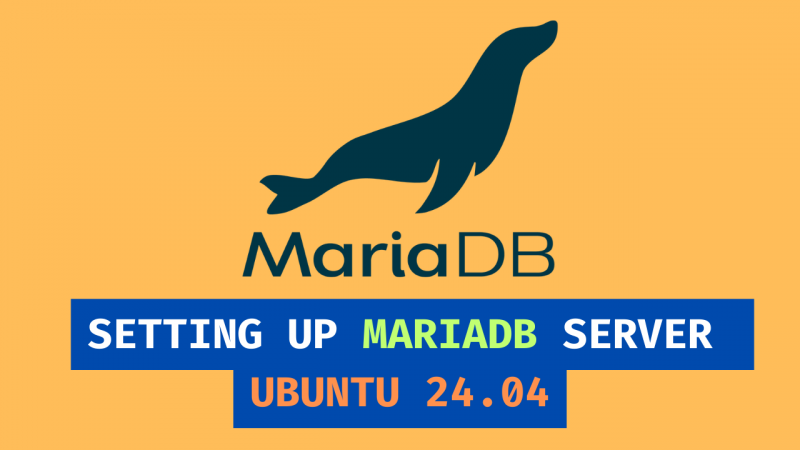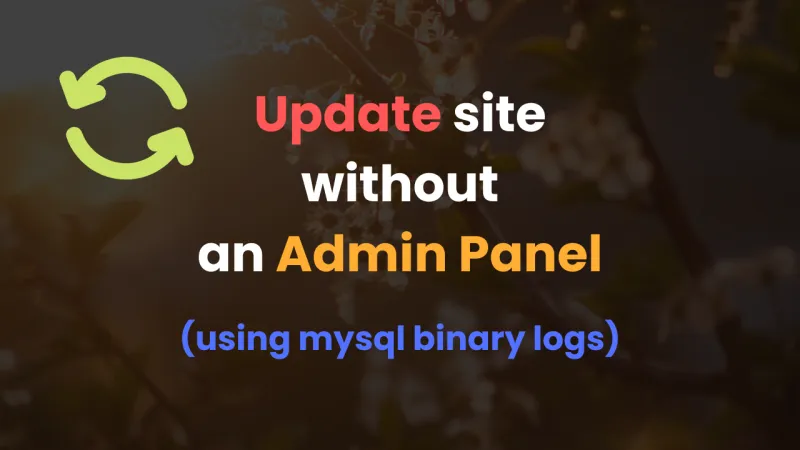This article may contain affiliate links. If you buy some products using those links, I may receive monetary benefits. See affiliate disclosure here
MariaDB server runs locally, and remote connections are not allowed by default. So, to connect to a remote MariaDB server, you can use an SSH tunnel. From a security perspective, this is much better than allowing remote connections on a MySQL/MariaDB server directly.
Also, make sure you are using SSH keys instead of passwords. Assuming that you have already setup the server with SSH key-based authentication, here is how you can connect to a remote database server via a tunnel.
First of all, set up the remote server's details in the SSH config file on your PC/desktop machine. I am using an Ubuntu Linux desktop, so my file is located at /home/abhinav/.ssh/config.
Host myserver
HostName 123.456.78.90
User abhinav
IdentityFile ~/.ssh/host-keys/myserver_priv_key(make sure to replace the details with your own)
Now that the detail is saved in the config file, you can just use myserver with the ssh command to login to the server.
ssh myserverThat's a normal SSH login. We can use the same to setup something called a 'tunnel' as well.
An SSH tunnel can be of two types:
- Local port forwarding
- Remote port forwarding
Establishing an SSH Tunnel
To connect to a remote mysql server, what we need is local port forwarding. You can achieve it with this command:
ssh -L 3307:localhost:3306 myserver- the flag
-Ldenotes that it is a local port forwarding 3307is the port on your local machine, that is your PC, desktop, etc. You can use any free port on your computer. Here, 3307 is being forwarded.localhost:3306is relative to the remote server, that ismyserver.3306is usually the default MySQL or MariaDB port.localhostis the localhost on the remote server, not on your PC.- so, whenever a request is made to port
3307on your PC, it will be forwarded to port3307on the remote server.
When you run this command in a terminal on your desktop, the connection will be established, and you will be logged in to the remote server's terminal.
Instead of that, you can also run SSH tunnel in the background by adding a few extra flags:
ssh -fN -L 3307:localhost:3306 myserver-fflag tells SSH to run in the background, so closing the terminal won't close the tunnel.-Nflag prevents SSH from executing remote commands. This prevents opening the remote shell.
Connecting to a remote MySQL console via SSH Tunnel
Keep that terminal opened like that, and open another terminal on your desktop. Or if it is in a background process, you can use the same terminal itself.
Then run the mysql or mariadb command to login to the remote MySQL terminal.
mysql -h 127.0.0.1 -P 3307 -u root -pYou'll be prompted to enter the root user's password, that is, the password of the root mysql user on the remote server, not on your PC.
If successful, you'll see the remote MySQL console.
Taking database backups via SSH Tunnel
SSH tunnel can also be used to take database backups:
mysqldump -h 127.0.0.1 -P 3307 -u root -p > my_site_db.sqlYou'll see the file my_site_db.sql downloaded right to your PC.
Checking if Tunnel is working
To check if the SSH tunnel is still established, you can search it:
ps aux | grep sshYou should find something like this if it is still running:
abhinav 24506 0.2 0.0 16956 8352 pts/0 S+ 20:34 0:00 ssh -L 3307:localhost:3306 myserverClosing an SSH Tunnel
To close an SSH tunnel, log out from the first terminal where you opened the SSH tunnel, and close the terminal window.
Or if you know the process ID, as from the ps aux result, you can kill the process to close the tunnel:
kill 24506This can be used especially to close SSH tunnels working in the background, where closing the terminal window has no effect.





